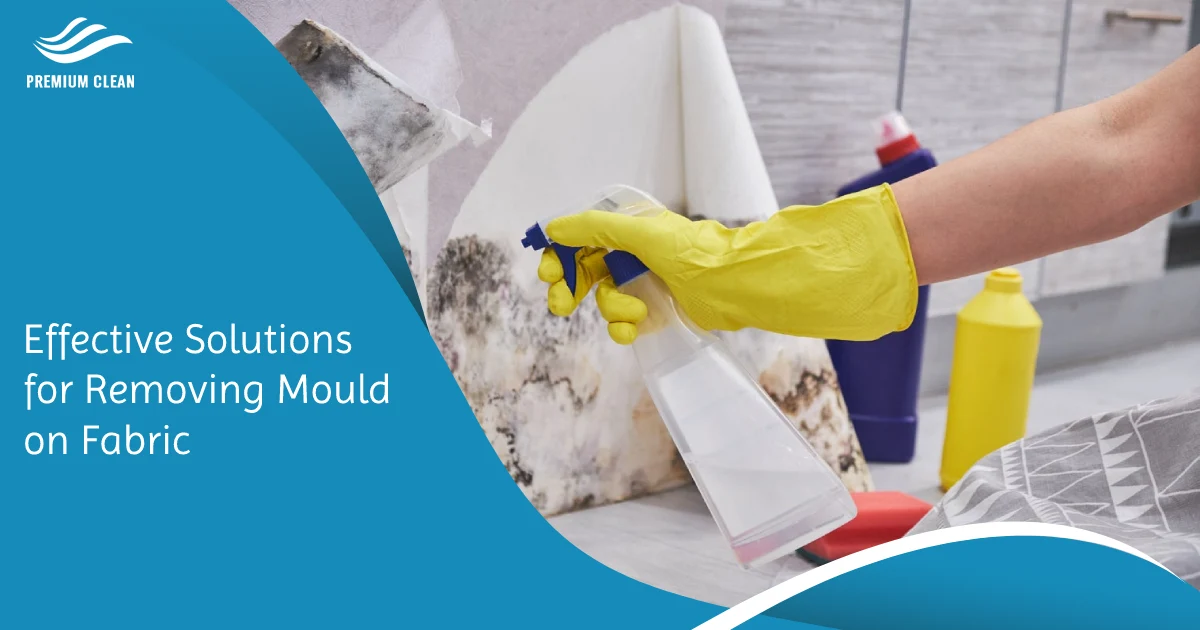Mould and mildew thrive on clothing stored in wet conditions. Here are the most effective solutions for removing mould from fabric!
Ever opened a box of clothing from the basement and found black spots growing on it? These moulds and mildew successfully develop and thrive on a porous organic surface exposed to prolonged humidity and moisture.
Some fabrics are easy to get rid of. All you need to do is toss them into the washing machine. Others, especially non-washable materials, require more work.
This article will teach you the nine ways of removing moulds on fabric.
What is Causing the Moulds on Fabric?
Mould and mildew thrive more in damp and humid conditions. Their spores float in and seek damp places to land. Once they find an inviting, wet surface, it will immediately spread and eat through any organic matter they clung to.
In nature, we need moulds to complete the life cycle of everything. It facilitates decomposition.
Two different kinds of moulds grow on fabrics.
- The black moulds are dangerous and highly visible even during their early stages.
- Another is the white moulds that grow abundantly in homes and soft furnishings.
Several factors can cause these growths in clothes. But the most predominant is when the clothes are left damp. One example is when you pile up dirty laundry. Your wet towel or gym shirt left on the pile can harbour moulds. Even clean clothes that did not dry on the line or in the dryer can also mould easily.
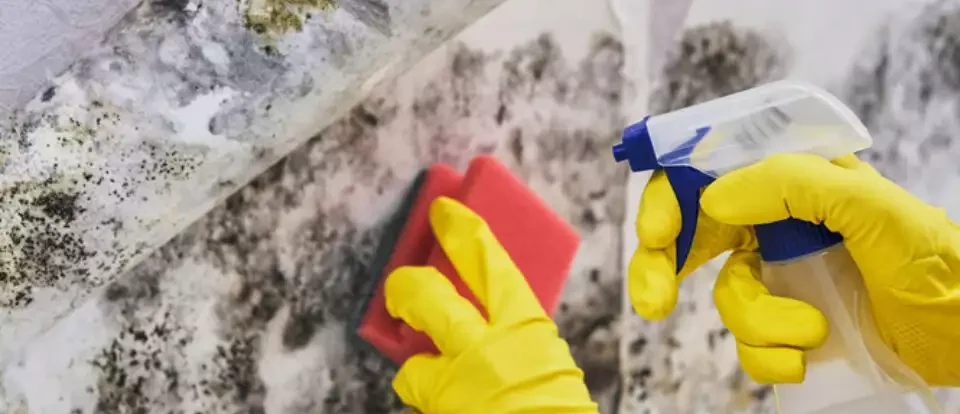
Effective Methods of Removing Moulds on Fabric
The fastest way to remove moulds from fabric is to wash it after treating it with bleach or other cleaning agents. However, washing alone will not eliminate the problem. It may remove the stain, but moulds can grow if the fabric is not treated with a mould-killing solution like that used in upholstery cleaning.
Luckily, many typical household and commercial products can kill most moulds.
Try these nine methods to treat moulds on fabrics.
Bleach
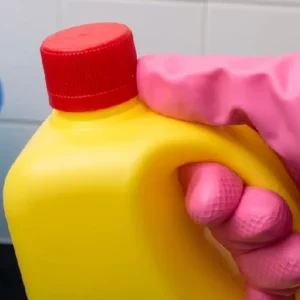 Bleach can be used as a mould remover on white cotton clothes. The verdict on whether it is effective or not is not yet out. It is effective on hard surfaces but not really on soft surfaces. For this reason, you should follow up the bleach with borax to be 100% sure.
Bleach can be used as a mould remover on white cotton clothes. The verdict on whether it is effective or not is not yet out. It is effective on hard surfaces but not really on soft surfaces. For this reason, you should follow up the bleach with borax to be 100% sure.
Instruction:
- Mix one-half cup water and one-half cup bleach.
- Spray it on the stained area.
- Let it sit for 10 minutes before placing the garment in the washing machine using a hot setting.
- Add detergent and bleach if the stain is heavy.
- Check for any lingering stains after washing.
Non-Bleach
You can use a gentle cleaning method for non-bleachable fabrics like wool, silk, or leather. As in upholstery cleaning, do check the care label. If it says dry clean only, don’t attempt to remove the mould from the fabric.
To safely launder the fabrics, you can do the following:
- Use vinegar on old linens to remove the moulds without damaging the gentle fabric.
- Use fabric restorer for old quilts, some silks, and lace garments.
- Use lemon and salt as they effectively remove moulds on wool fabrics.
- Soak the leather in rubbing alcohol and gently wipe the stain.
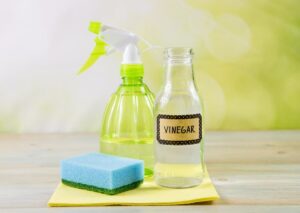 Vinegar
Vinegar
This versatile household product contains acetic acid, which effectively kills the most significant types of moulds. The simplest way to use it is to measure two cups of distilled white vinegar into the washing machine and use the hot water cycle.
For large and stubborn dirt, try to soak the fabric with straight vinegar and let it sit for twenty minutes. Then, put the garment in the washer. Check if there are any remaining stains after the cycle.
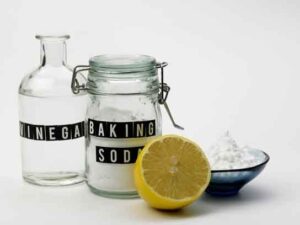 Baking Soda and Vinegar
Baking Soda and Vinegar
If vinegar kills the mould, the baking soda will remove its smell. When you combine these two powerful products, it can effectively handle all moulds. The best way to do this is to add the vinegar on the first rinse cycle and the baking soda on the second part. You can also use this combination on your fabric couch. It is an excellent help in upholstery cleaning.
Hydrogen Peroxide
Hydrogen Peroxide is a powerful disinfectant that can kill moulds and viruses. Like vinegar, it also has many cleaning properties and effectively removes moulds on fabrics. However, it can harm coloured fabrics. Therefore, before trying this method, you should dab a small drop on the inside seam to check the material.
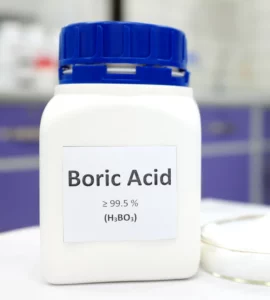 Borax
Borax
Borax does a great job removing mould stains and smells. When mixed with water, it acts as a powerful fungicide, creating hydrogen peroxide. Soak the garment in a combination of borax and hot water for twenty minutes. After soaking, wash it in the washing machine with regular detergent in a hot water setting.
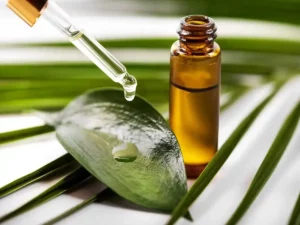 Tea Tree Oil
Tea Tree Oil
A natural product that works fast in removing mould is tea tree oil. It can act as a fungicide and has antimicrobial properties that kill even the mould spores in the air. It is also not as harmful as borax or bleach.
Instruction:
- Mix one teaspoon tea tree and one cup of water in a spray bottle.
- Spritz it on the stained area and let it sit for ten minutes.
- Put the remaining tea tree oil and water with detergent.
- Wash the garment in the washing machine using hot water.
Read this article on Simple and Easy Hacks for Cleaning Mould-Off Curtains.
Conclusion
You can use typical household and commercial products, such as vinegar, bleach, hydrogen peroxide, and borax, to remove mould from fabric. These products can kill mildew and remove stains while keeping the clothing clean. In addition, you can restore a mouldy garment or fabric furniture to its unstained condition by acting fast.
Moulds thrive in damp and humid conditions. The best way to prevent them from growing on your clothing is to avoid leaving wet piles of dirty laundry and put away clean clothes after drying.
Last Updated on March 15, 2024

